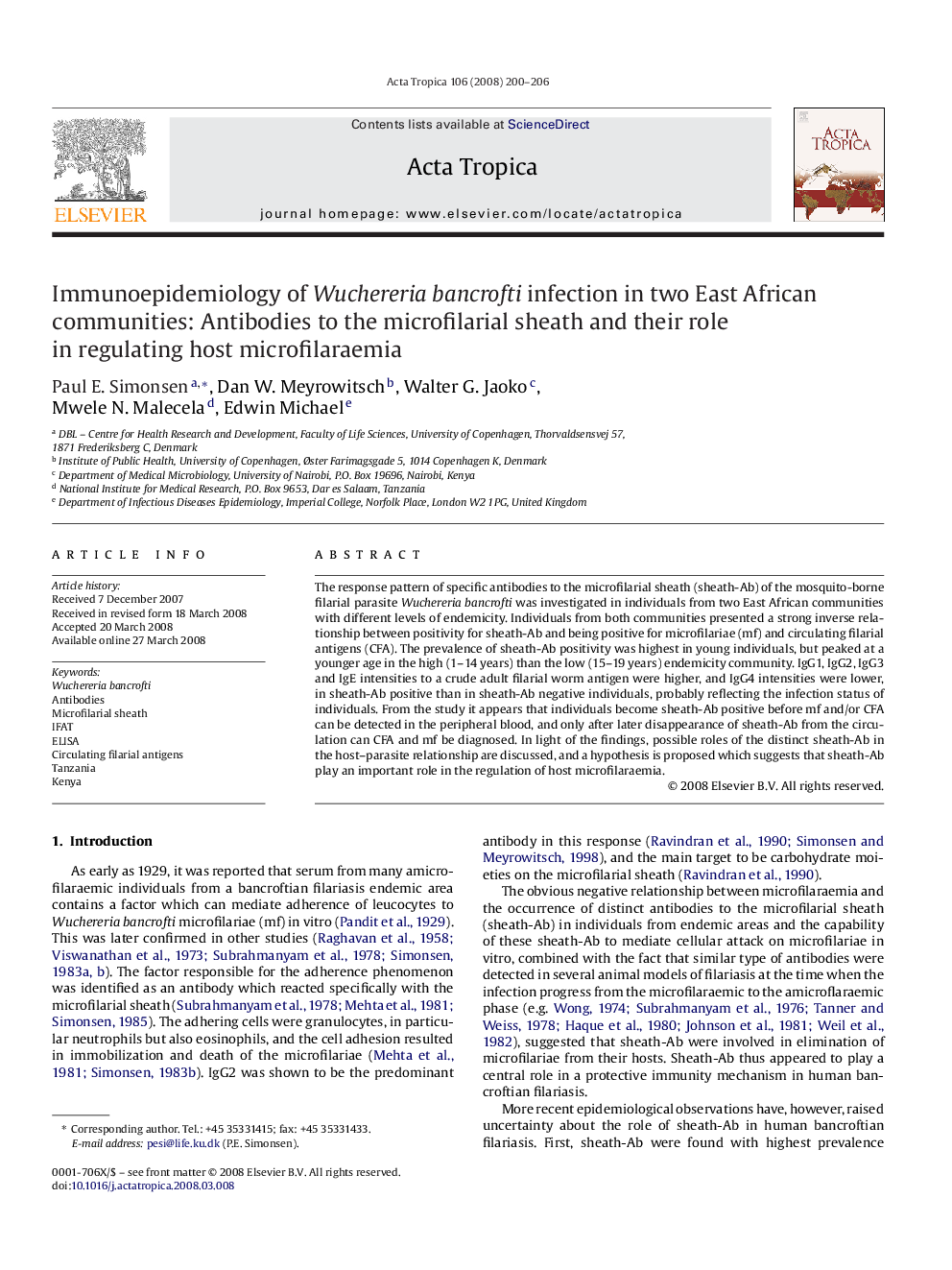| Article ID | Journal | Published Year | Pages | File Type |
|---|---|---|---|---|
| 3394538 | Acta Tropica | 2008 | 7 Pages |
Abstract
The response pattern of specific antibodies to the microfilarial sheath (sheath-Ab) of the mosquito-borne filarial parasite Wuchereria bancrofti was investigated in individuals from two East African communities with different levels of endemicity. Individuals from both communities presented a strong inverse relationship between positivity for sheath-Ab and being positive for microfilariae (mf) and circulating filarial antigens (CFA). The prevalence of sheath-Ab positivity was highest in young individuals, but peaked at a younger age in the high (1-14 years) than the low (15-19 years) endemicity community. IgG1, IgG2, IgG3 and IgE intensities to a crude adult filarial worm antigen were higher, and IgG4 intensities were lower, in sheath-Ab positive than in sheath-Ab negative individuals, probably reflecting the infection status of individuals. From the study it appears that individuals become sheath-Ab positive before mf and/or CFA can be detected in the peripheral blood, and only after later disappearance of sheath-Ab from the circulation can CFA and mf be diagnosed. In light of the findings, possible roles of the distinct sheath-Ab in the host-parasite relationship are discussed, and a hypothesis is proposed which suggests that sheath-Ab play an important role in the regulation of host microfilaraemia.
Related Topics
Life Sciences
Immunology and Microbiology
Parasitology
Authors
Paul E. Simonsen, Dan W. Meyrowitsch, Walter G. Jaoko, Mwele N. Malecela, Edwin Michael,
